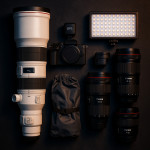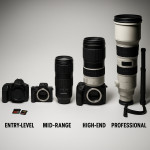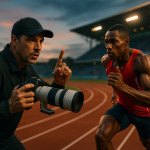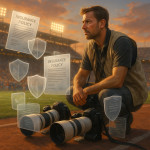From hobbyist to pro in sports photography: milestones and rate ladders
Breaking into sports photography is thrilling yet confusing. This guide maps every milestone—from your first hobbyist snaps to full-time professional assignments—while revealing realistic rate ladders, equipment checkpoints and credibility triggers that win paid work.
Why you need a milestone-driven plan
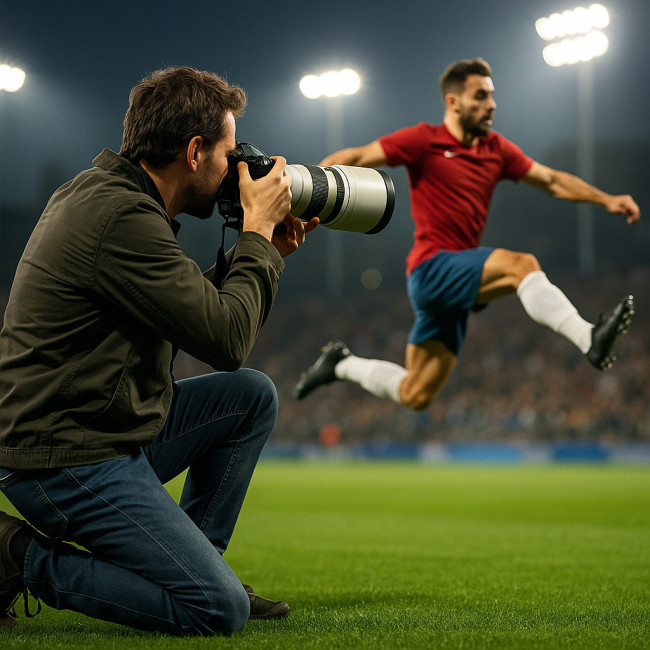
Sports photography rewards speed, anticipation and brand-ready visuals. Without a structured path, you risk plateauing at the “free ticket + exposure” stage. A milestone-driven roadmap focuses your learning, gears your portfolio toward ROI metrics brands notice and helps you quote rates with confidence.
Core milestones on the road to professional status
1. Foundational phase: Hobbyist (0 – 2 years)
- Master manual exposure and fast autofocus tracking.
- Invest in an entry-level body plus a 70-200 mm f/2.8 lens; rent before you buy.
- Shoot school games or charity races to build reflexes and early portfolio shots.
- Publish selects on social media with clear alt text to practice discoverability.
2. Emerging freelancer: Local leagues & side gigs (2 – 4 years)
- Upgrade to dual card-slot bodies for redundancy and obtain public liability cover—see insurance essentials for sports photographers.
- Pitch local clubs with a concise rate card: per-game fee + digital package.
- Introduce basic AI tagging to speed culling and upload turnaround.
- Begin networking through directories such as the dedicated sports photographer roster on Artfolio.
3. Semi-professional: Regional circuits & brand activations (4 – 6 years)
- Add remote strobes and high-speed sync to master stadium flash techniques.
- Negotiate multi-usage licences with small apparel brands and energy-drink sponsors.
- Deliver photos within 12 hours to exploit event-related search spikes.
- Adopt layered contracts: day rate + image bundles + optional exclusivity.
4. Established pro: National & international events (6 + years)
- Carry dual flagship bodies, 400 mm f/2.8 primes and redundant storage workflows.
- Get accredited by federations; learn athlete-first etiquette via elite athlete briefing tips.
- License images globally, manage retainer agreements and outsource post-production.
- Publish yearly environmental impact reports to stay attractive to eco-conscious clients.
Rate ladders: what to charge at every milestone
Rates vary by sport, market and deliverables, yet observable benchmarks help you quote confidently.
| Career level | Typical day rate (USD) | Per-image web licence | Key client type |
|---|---|---|---|
| Hobbyist | Unpaid – $50 | $0 – $10 | Friends, school teams |
| Emerging | $150 – $300 | $15 – $40 | Local leagues |
| Semi-pro | $400 – $700 | $50 – $120 | Regional brands |
| Pro | $1 000 – $2 000 | $150 – $400 | National federations, agencies |
| Elite | $2 500 + | $500 + | Global sponsors, newswires |
Source : National Press Photographers Association 2024 survey
Key levers that lift you to the next milestone
1. Invest incrementally in gear
Follow a staged shopping list rather than splurging early. The gear roadmap for aspiring sports photographers recommends renting high-end primes until bookings justify ownership.
2. Speed up delivery
Brands value velocity. Tether in-stadium, apply batch presets, and publish a selection within 30 minutes to harness social buzz.
3. Track and communicate ROI
Use click-through metrics, downloads and sponsor impressions from previous campaigns to justify moving up the rate ladder.
4. Expand licensing literacy
Understand exclusive, first-look and embargo clauses. Clear definitions prevent scope creep and protect your elite-level fees.
5. Build social proof
Accreditations, testimonials and press passes snowball credibility. Embed badges and verified credits on your profile page.
Smart pricing tactics at each stage
- Bundle packages—offer tiered image counts and format variations.
- Introduce rush fees once you hit the semi-pro stage; they reinforce value while funding extra assistants.
- Keep annual rate reviews aligned with equipment depreciation and inflation.
- Use sliding travel fees to stay competitive on regional jobs yet profitable on internationals.
Common mistakes that stall progression
- Undercutting seasoned pros—devalues the entire niche and pegs you as amateur.
- Ignoring insurance—gear theft at a finals match can erase two years of savings.
- Delivering late—missed social cycles cost clients money; they rarely forgive.
- Publishing athlete images without proper releases—opens legal risk and brand friction.
Mini-quiz: test your sports photography growth savvy
FAQ
- How many sports do I need in my portfolio to attract national clients?
- Two to three disciplined sports—ideally one indoor, one outdoor and one motorsport—prove versatility without diluting your brand.
- When can I start charging rush delivery fees?
- Introduce rush fees once you consistently deliver galleries within 24 hours and have at least regional brand clients in your roster.
- Is second-shooter assistance necessary at the emerging stage?
- Yes, occasional second shooters help you cover simultaneous angles and learn delegation—crucial skills before scaling to international events.
- Do I need a union or press pass for elite-level events?
- Most federations require press accreditation; joining relevant press associations streamlines approvals and insurance policies.
Ready to climb your next rung?
Audit your current milestone, adjust your gear and pricing accordingly, and pitch your next assignment today. Every well-planned climb shortens the path from hobbyist to pro in sports photography.
